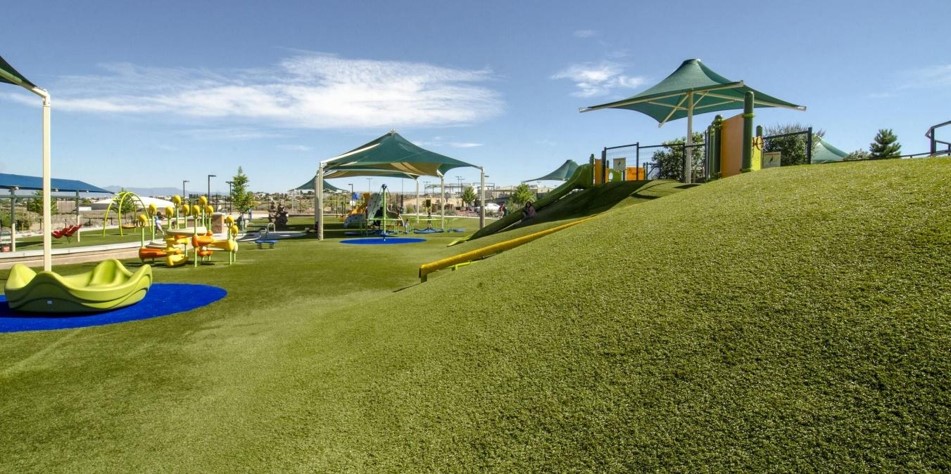Playground grass has become popular for public play spaces due to its numerous benefits. The following are the main benefits of using artificial turf in these environments, highlighting how it improves the safety, aesthetics, and sustainability of parks and playgrounds.
Improved Safety
Playground grass provides a soft, cushioning surface that reduces the impact of falls, minimizing the risk of injury. This is especially important in play areas where children actively run, jump, and play. Unlike natural grass, artificial turf offers a consistent, level surface, eliminating the risk of tripping over uneven ground, tree roots, or other hidden obstacles. Due to its consistency and level, it ensures a safe playing environment without unnecessary hazards.
Easy and Economical Maintenance
Playground grass is not affected by adverse weather conditions. It does not turn to mud during rain or become dry and brittle during droughts, ensuring that the playground is always in optimal condition for use. In addition, keeping playground grass clean is simple and economical. It can be easily rinsed with water to remove dust and dirt, and any spills or messes can be quickly addressed, ensuring that the playground is a hygienic and safe space for children. This cost-effective maintenance adds to the overall economic benefits of using playground grass.
Sustainability and Environmental Benefits
Playground grass does not require irrigation, which contributes significantly to water conservation. This is a crucial advantage in regions where water is scarce. Unlike natural grass, playground grass does not require pesticides, herbicides, or fertilizers. This reduces the amount of chemicals released into the environment, promoting a healthier environment.
Aesthetic Appeal
Playground grass maintains its colorful and vibrant appearance year-round, regardless of season or weather conditions. This enhances the aesthetics of public play spaces, making them more attractive and inviting. For instance, it can be installed in the shape of a maze, a hopscotch grid, or a colorful pattern, allowing playground designers to create visually appealing and unique play areas. This not only enhances the site’s appearance but can also stimulate children’s imagination and creativity.

Health Benefits
Natural grass can trigger allergies in some children, causing discomfort during play. Playground grass, being hypoallergenic, is an alternative unlikely to cause an allergic reaction, providing an allergy-free play environment. This allows children with allergies to enjoy their play experiences without health concerns fully. Also, playground grass does not harbor insects and pests like natural grass, which reduces the risk of bites and stings. This creates a safer and more comfortable play environment for children.
Wear Resistance
Playground grass is designed to withstand heavy use and resist wear and tear. This makes it a durable choice for public play spaces with constant foot traffic. With proper maintenance, it can last for many years without losing its appearance or functionality. This long-term durability ensures a safe and attractive play environment and makes it a profitable investment for communities, instilling confidence in its sustainability and cost-effectiveness.
The ideal choice
Playground grass offers several benefits, making it an ideal choice for public play spaces. From improving safety and aesthetics to providing environmental and health benefits, playground grass is a versatile and sustainable solution. Its versatility allows creative designs and patterns, inspiring communities to create unique and visually appealing play areas. By considering installing artificial turf in parks and playgrounds, communities can create safe, attractive, and durable environments for children to enjoy while also unleashing their creativity.
What did you think of this topic? Do you want to know more about Playground Grass?
If you want a Playground Grass for your project, playground, community, daycare, school, or public park, contact us by visiting the following link.